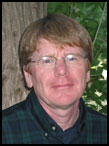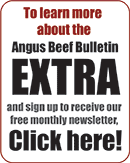
Kris Ringwall
Beef Talk
The bottom line is finding a way to control costs.
My pondering thought for the day: Larger cattle have a 10% advantage when a cattle system is evaluated based on calves as the unit of production, but when based on acres as the unit of production, smaller cattle have a 10% advantage.
This oversimplified thought is a foundational question for the future of beef. Embedded in that question is the need to control costs. However, the fiscal focus points do change, depending on in what phase of the beef system an individual is involved. These focus points are very evident when the differences between the acre-based cow-calf producer are compared with the individual animal-based point of harvest.
This shift occurs as calves leave their summer pastures and other foraging opportunities for the structure of finishing pens later on. However, no matter what the end of the production chain may be, the death knell of a product exists when costs exceed value. Here are attempted solutions:
- First: Take one’s own assets, reduce equity and hope.
- Second: Borrow the money and worry.
- Third: Pass costs (and blame) from one segment of the industry to the next.
Sorry, the list could continue, but regardless, the solution must involve the fundamental issue of cost control. Managerial discussion may include a few words of cost containment, but soon, cost per unit of production enters the equation.
The discussion gets ambiguous because the answers require a defined unit of production. That may seem like a simple question, but no, it is not. Is the production unit the calf, the cow, the pen, the acre or the day? In truth, the answer is different from one end of the beef production chain to the other.
The Dickinson Research Extension Center does monitor the effects of cow size on cost. The center maintains a fully vertically modeled beef production system from conception to harvest. Granted, most producers do not, but maintaining ownership from conception through harvest allows for a better understanding of how the different fiscal focus points interact within the beef production chain.
Center data showed an 8.3% advantage for larger steers if the production unit is the steer. If the production unit is the acre, smaller steers have a 9.2% advantage. The smaller-framed cows’ revenue per finished steer was lower, $821.81 vs. larger-framed cows ($895.82). However, the smaller cows’ total steer calf net return was $4,517 greater because the small-framed cow stocking rate was 20% more, resulting in the sale of 20% more steer calves. (More details of the study are reported by visiting scholar Songül Şentürklü and center animal scientist Doug Landblom at http://tinyurl.com/DRECstockingrate.)
The data reflect the obvious need for the beef industry to discuss the point. Many times, the two ends of this discussion do not meet in the same room and the opportunity for contrary thought is limited. Stifling discussion is not good, so we must welcome the unwanted discussion, because it will help assure a strong foundation for the beef business.
Meat-producing sectors of agriculture utilize solutions based on enhanced technical knowledge and refinement throughout the beef industry. That is good and true, but ... and this is a big “but.”
For producers, costs are the driving force. When a producer ramps up production, the long delays in implementing production change may result in increased costs prior to increased revenue, which means involvement from the financial community for support. Plus, commodity asset values can change quickly, resulting in a shift in needed equity, which may make the change rather difficult.
Who pays? The owner. Why the nagging thought? We have two outcomes:
- First, increased emphasis placed on the harvest end point evaluated by individual animals may not be favorable for the cow-calf producer. Thus, the crowd at the annual bull sale will get less. All one needs to do is count the number of local poultry, dairy and swine units and try to find your neighbor.
- Secondly, if all emphasis is on the cow-calf production unit, the product value may become inconsistent, which will decrease value and limit money within the business of beef.
So the big-cow, small-cow issue is a real question. The answer is most likely somewhere in the middle. When I started in Extension, I worked at the sheep barn, and the most pleasurable point of the day was loading silage. The ensiled alfalfa room smelled so good.
After starting with the NDSU Extension Service, Ramsey County Extension agent John Logan and I were driving around. He pointed to some silos on the horizon and said, “Overinvest and you get a ghost farm. Lots of pens, but where are the cattle?” I never forgot that no one was left to smell the silage. Point taken.
May you find all your ear tags.
Editor’s Note: Kris Ringwall is a beef specialist for North Dakota State University Extension. For more information, contact www.ag.ndsu.edu/news or North Dakota State University Extension Service, NDSU Dept. 7000, 315 Morrill Hall, P.O. Box 6050, Fargo, ND 58108-6050.
[Click here to go to the top of the page.]







